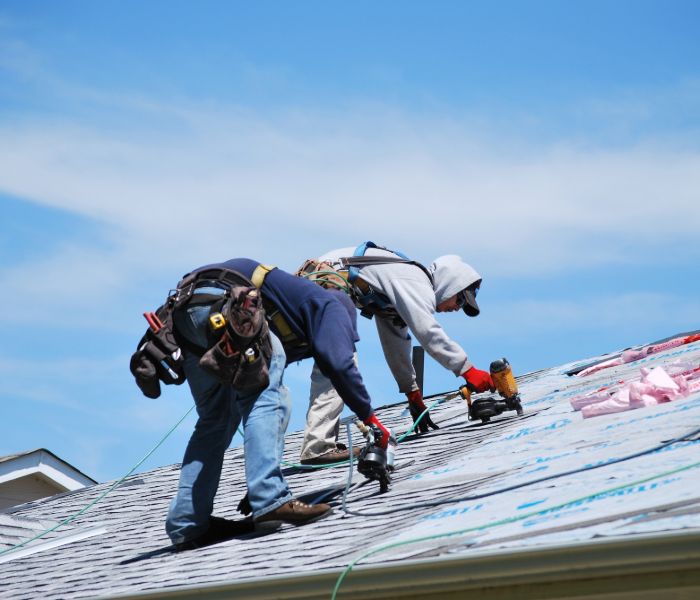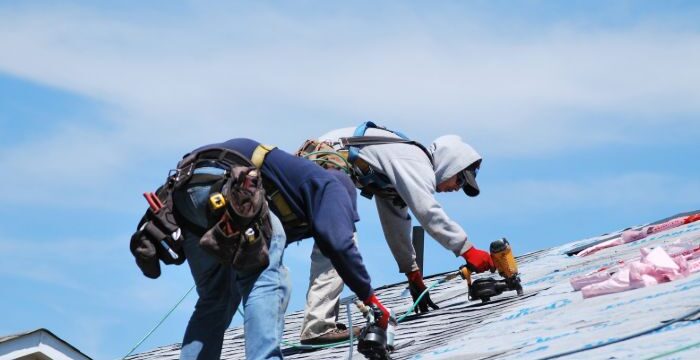When it comes time to roof their houses or projects, most homeowners are confronted with the dilemma of deciding which material to utilize. Roofing materials are many, and the best option can only be made when an expert or team of experts is engaged in the process of determining the best material to employ. When selecting the right roofing material, you must consider factors such as aesthetics, lifespan, cost, and structural integrity.

This article is provided by our professional roofers at Fort Collins Roofing Company. Learn more about our roofing materials and products by visiting our website at fortcollinsroofingcompany.com
Among the roofing materials available are the following examples:
Membrane Roofing
A membrane roof is one of the most popular options for a flat roof. Various kinds of membranes may be employed, including the following:
- Neoprene (polychloroprene)
- Ethylene Propylene Diene Monomer (EPDM)
- PVC (polyvinyl chloride) is a plastic
- Printed sheets made of chlorinated polyethylene and chlorosulfonated polyethylene
- Bitumens with polymer modifications
One of the top membranes is Ethylene Propylene Diene Monomer. It is a prominent roof type being used, and is accepted in arid regions of the globe.”Rubber roofing” is a term that is often used to describe this kind of roofing. It’s comparable to rolled asphalt roofing in that it’s installed in huge sheets to reduce the number of seams through which water might leak. When the roof is installed correctly, it is durable.
Asphalt
Asphalt is the most prevalent roofing material in North America. These are made up of fiberglass base with asphalt and mineral granules on top, making them a suitable option for most residential roofing requirements coupled with the fact that they are pretty easy to install.
Wood
Wooden roofs are attractive, but they are pricey, and their use is restricted. In addition, they are not durable, and they’re not a good option in areas prone to wildfire and areas that record-high levels of rainfall annually. Nevertheless, they are among the top-ranking aesthetically pleasing of all roofing materials, making them a popular option for high-end residences. Wood commonly used includes cedar and redwood.
Slate
Slate roof is an option for the homeowner who demands the best. Some hundred-year-old slate roofs still work (speaking of durability). True slate roofing is made of thin sheets of actual stone. Slate is simple to quarry because it cleaves off thin sheets, making it perfect for roofing. But slate installation requires a professional.
Instead of genuine slate, artificial polymers coupled with recycled plastic and rubber are utilized to create this material, similar to slate. It is quite popular in North wales.
It may be almost hard to tell the difference between this constructed roofing and natural slate roofing from the ground. Furthermore, synthetic slate is relatively lightweight, making it a feasible alternative for homes that cannot handle the weight of natural slate.
Clay Tiles
It is made of earthy clay rolled or interlaced into shapes and baked until hard. When left unglazed, it retains its reddish-orange color but improves structural integrity. When glazed and fired, it is used to create ceramic roofing tiles. Clay tile is ideal for hot regions or areas with salt air. It explains why these roofs are so prevalent in southern coastal and desert regions. In terms of durability, Clay tile roofing can last over a century.
Concrete Tile
A concrete tile roof is installed similarly to a clay tile roof and offers similar benefits. Colored concrete tiles are made from conventional sand-mix concrete and are available in various colors. In addition, various profiles are available, some of which resemble rolling clay tiles and others which resemble wood shakes. Concrete roofs are suitable for use in every part of the globe, depending on the homeowner’s preferences.
Metal roof
Metallic materials are now made available for homeowners who don’t like the appearance of metal roofs but want the benefits of metal. Metal shingles, which are made of pressed metal and treated with a high-quality baked-on coating or mineral granules, may be made to resemble regular asphalt shingles, timber shakes, or even slate or clay tiles. They’re an excellent option for anyone who cares about their appearance.
Green Roof
The green or alive roof is an unorthodox type of roof with great potential. It can re-oxygenate the air, insulate your home, absorb rainfall, and even produce plants.
Install a waterproof membrane and proper drainage before installing a green roof. A green roof might be “intense,” sustaining enormous plants and humans, or “extensive,” supporting merely light growth like moss.
Green roof cost greatly varies, but it is unquestionably a roof for people ready to invest money to make a statement about the environment. Such roofs will also need frequent maintenance to remain in good condition for a longer duration.
Rolled Roofing
Roofing material made of rolled sheets is the most common roofing material used on low-sloped residential roofs and outbuildings such as shops, sheds, and other valuable structures. Mineral-impregnated and asphalt-impregnated roofing materials are used for rolled roofing. The granules on top of the material protect the roof from the elements. Each roll of roofing is about 100 square feet in area and approximately 3 feet wide.
Using large-format strips of thin roofing material to cover a sloped-roof structure, such as a workshop, is a quick, practical, and economical solution for covering a facility where looks are not crucial. Depending on the application, roofing nails or the torch-down technique may be used to install rolled roofing.
Knowledge of several kinds of roofing materials will enable you to make the best option possible. Some roofing materials are expensive, but they provide more benefits than others. On the other hand, Affordable alternatives may have the same durability as more costly choices, but they may be less appealing.
Hiring an expert is a must to help determine which roofing material would work best for your particular house.
According to a HomeAdvisor, the average quote for changing a roof is about $3,600 and $120,000 on average. Prices vary depending on several factors. However, to maximize return at the lowest cost, an expert touch is indispensable, so be sure to hire one!
